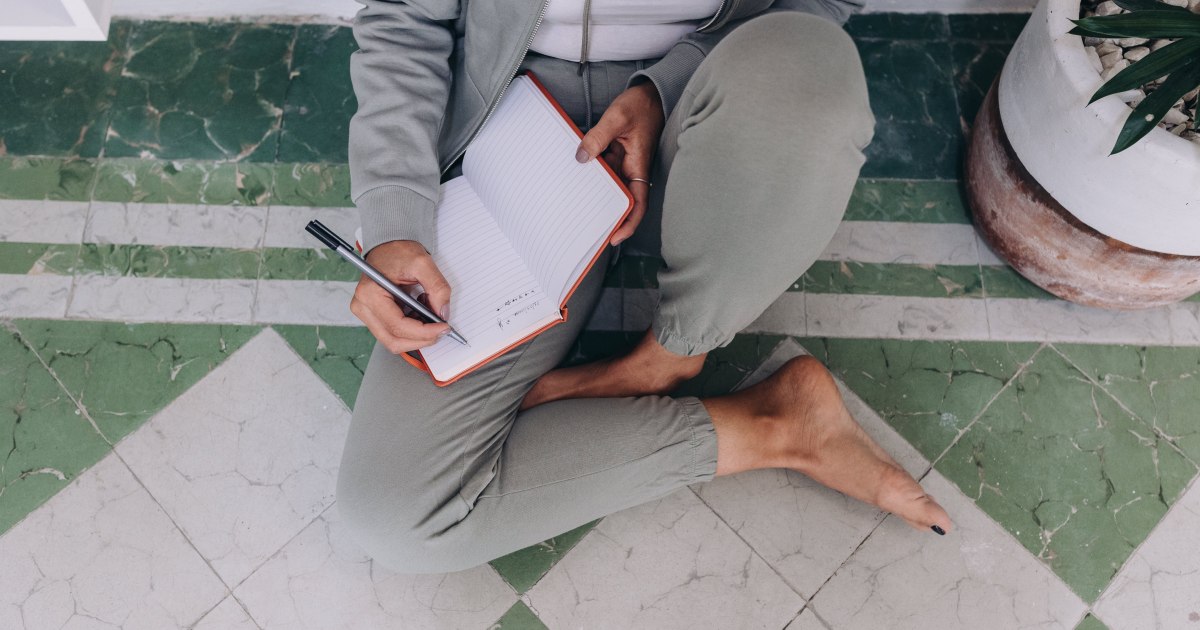Anxiety is far more common than many viewers realize — on camera, behind the camera, and at home — and there are quick, practical ways to steady yourself when it spikes.
According to the Anxiety and Depression Association of America, generalized anxiety disorder affects roughly 6.8 million U.S. adults (about 3.1% of the population). Yet less than half — only 43.2% — receive treatment. For anyone juggling a hectic production day, a high-stakes audition, or the everyday stress of streaming through a backlog, simple grounding exercises can be a reliable reset button.
A Therapist’s Take On Staying Present
“When we are in those anxious states, our minds are somewhere else. We’re worrying about the future or ruminating about what didn’t go so well in the past,” clinical social worker and psychotherapist Sharon Martin told TODAY.com. The aim of grounding, she explained, is to refocus on what’s happening right now. “It forces your mind to slow down and take inventory of the things that are actually within your control.”
That shift — from spiraling thoughts to tangible, immediate details — is what makes grounding especially useful in high-pressure settings. On a set, in a rehearsal room, or before a live appearance, performers and crew don’t always have time for a long break. These quick techniques are designed to be portable: no special equipment, no perfect environment, just a moment to reconnect with the present.
Quick Grounding Steps You Can Use Anywhere
Sit and get comfortable. You don’t need the ideal quiet spot. Take the seat that’s available — a folding chair offstage, the edge of a bench outside the studio, or your couch at home. Let your body settle.
Connect with the ground. Place both feet flat on the floor and rest your hands on your knees or the surface beneath you. Notice the weight of your body and the support underneath. That physical contact can reinforce a basic sense of safety and stability.
Breathe deliberately. Keep your eyes open and take a slow, deep breath. Feel the air move in through your nose and out through your mouth. If it helps, silently count a steady rhythm on the inhale and exhale to encourage your nervous system to dial back the alarm.
Focus on the here and now. Pick one thing around you to study for 20–30 seconds. It might be the weave of your shirt sleeve, the glint of light through a window, or the color of a colleague’s shoes. Note as many specific details as you can — texture, shape, temperature, shade.
Stay with the moment. Keep breathing and keep noticing. If your mind darts to what’s next — the scene, the meeting, the commute — gently return to your breath or your chosen detail. This repetition trains your attention to anchor in the present.
Visualize a peaceful memory (if needed). If the anxious edge lingers, bring to mind a place where you’ve felt calm and content — a quiet beach, a favorite park bench, a familiar room. Picture the scene with sensory detail: the sound of the water, the warmth of the sun, the feel of the breeze. Let that memory soften the noise.
Why It Helps On Set — And At Home
Grounding techniques work because they leverage your senses to interrupt runaway thoughts. By observing what you can see, touch, and hear in real time, you shift energy away from “what if” and toward “what is.” For actors, that can mean settling nerves between takes or centering before a line read. For crew, it can help maintain focus amid constant movement. And for viewers, it’s a way to pause the doomscroll and reconnect with the room you’re actually in.
Martin’s guidance underscores a practical truth: you can’t control the future, but you can choose where to place your attention in the moment. That choice becomes a skill — one that improves with repetition. Even 60 seconds can be enough to create a buffer between anxious thoughts and your next task.
Making Mental Health Part Of The Workflow
With so many in the U.S. experiencing anxiety, integrating quick resets into daily routines — call time to wrap, classroom to living room — is more than wellness hype. It’s a low-effort, high-impact habit that complements, but doesn’t replace, professional support. If anxiety is persistent or disruptive, connecting with a licensed clinician can offer personalized strategies and care options.
In high-pressure environments like film and TV, schedules are tight and demands are high. Grounding exercises are a realistic tool that fit into those constraints. They don’t require extra time in the day; they simply ask for a brief shift in attention. Whether you’re prepping to step in front of the camera or pressing play on your next episode, the steps above can help you meet the moment with a steadier mind.
The takeaway is simple: come back to your body, come back to your breath, come back to the room. As Martin puts it, grounding brings your focus to what’s happening “right here and now.” That’s not just good mental hygiene — it’s a performance advantage and a life skill.















































































































